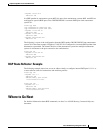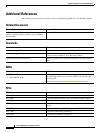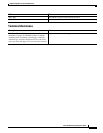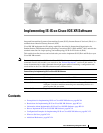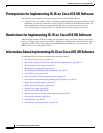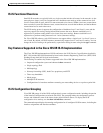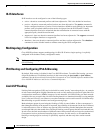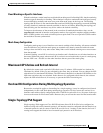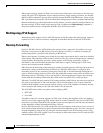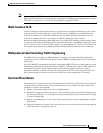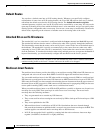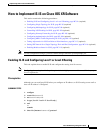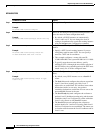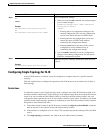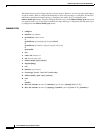
Implementing IS-IS on Cisco IOS XR Software
Information About Implementing IS-IS on Cisco IOS XR Software
RC-87
Cisco IOS XR Routing Configuration Guide
Flood Blocking on Specific Interfaces
With this technique, certain interfaces are blocked from being used for flooding LSPs, but the remaining
interfaces operate normally for flooding. This technique is simple to understand and configure, but may
be more difficult to maintain and more error prone than mesh groups in the long run. The flooding
topology that IS-IS uses is fine-tuned rather than restricted. Restricting the topology too much (blocking
too many interfaces) makes the network unreliable in the face of failures. Restricting the topology too
little (blocking too few interfaces) may fail to achieve the desired scalability.
To improve the robustness of the network in the event that all nonblocked interfaces drop, use the
csnp-interval command in interface configuration mode to force periodic complete sequence number
PDUs (CSNPs) packets to be used on blocked point-to-point links. The use of periodic CSNPs enables
the network to become synchronized.
Mesh Group Configuration
Configuring mesh groups (a set of interfaces on a router) can help to limit flooding. All routers reachable
over the interfaces in a particular mesh group are assumed to be densely connected with each router
having at least one link to every other router. Many links can fail without isolating one or more routers
from the network.
In normal flooding, a new LSP is received on an interface and is flooded out over all other interfaces on
the router. With mesh groups, when a new LSP is received over an interface that is part of a mesh group,
the new LSP is not flooded over the other interfaces that are part of that mesh group.
Maximum LSP Lifetime and Refresh Interval
By default, the router sends a periodic LSP refresh every 15 minutes. LSPs remain in a database for
20 minutes by default. If they are not refreshed by that time, they are deleted. You can change the LSP
refresh interval or maximum LSP lifetime. The LSP interval should be less than the LSP lifetime or else
LSPs time out before they are refreshed. In the absence of a configured refresh interval, the software
adjusts the LSP refresh interval, if necessary, to prevent the LSPs from timing out.
Overload Bit Configuration During Multitopology Operation
Because the overload bit applies to forwarding for a single topology, it may be configured and cleared
independently for IPv4 and IPv6 during multitopology operation. For this reason, the overload is set
from the router address family configuration mode. If the IPv4 overload bit is set, all routers in the area
do not use the router for IPv4 transit traffic. However, they can still use the router for IPv6 transit traffic.
Single-Topology IPv6 Support
Single-topology IPv6 support on Cisco IOS XR software allows IS-IS for IPv6 to be configured on
interfaces along with an IPv4 network protocol. All interfaces must be configured with the identical set
of network protocols, and all routers in the IS-IS area (for Level 1 routing) or the domain (for Level 2
routing) must support the identical set of network layer protocols on all interfaces.



